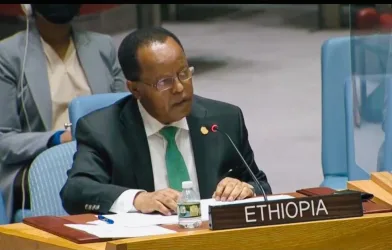 The drought-induced famine crisis in Somalia has eased somewhat, United Nations officials said on Friday, with the number of people facing imminent starvation dropping to nearly 250,000 from 750,000 because of rainfall and increased aid deliveries.
The drought-induced famine crisis in Somalia has eased somewhat, United Nations officials said on Friday, with the number of people facing imminent starvation dropping to nearly 250,000 from 750,000 because of rainfall and increased aid deliveries.
The situation remains bleak, however, and Somalia’s food security is still the worst in the world. But “substantial humanitarian assistance has mitigated the most extreme food deficits and reduced mortality levels,” according to a report issued by the Famine Early Warning Systems Network and the Food Security and Nutrition Analysis Unit, which are partly financed by the American government and the United Nations.
Somalia has lurched from crisis to crisis since its central government collapsed in 1991, and this year a famine swept through the southern regions of the country. Drought was the immediate cause; the year has been one of the driest in decades. But the drought unleashed a full-blown famine at the hands of the Shabab, a vehemently anti-Western militant group that controls much of southern Somalia and that has been blocking most aid agencies from reaching people in need.
In the last few months, Western aid agencies have been ramping up operations and scrambling to find ways to obviate the Shabab restrictions, relying on technologies like sending money electronically by cellphone so people in famine zones can buy food from local markets. Western charities are also partnering with new players on the aid scene, like Turkish groups and other Muslim organizations that are allowed into Shabab-controlled areas.
The efforts seem to be working. According to the report released Friday, more food is flowing through markets and prices are falling. Seasonal rains have also replenished pastures. Three regions of southern Somalia — Bay, Bakool and Lower Shabelle — which were famine zones a few months ago are now classified as one step less severe than a famine.
Still, tens of thousands of people have died from malnutrition, and the famine is likely to linger in several areas of Somalia for the rest of the year.
“This crisis is nowhere near over,” said Sonia Zambakides, head of Save the Children’s Somalia emergency response. “While there has been an improvement in these areas thanks to the international aid effort, children are still dying at a frightening rate across Somalia.”
Aid officials have also said that the recent Kenyan military offensive in southern Somalia, in which hundreds of Kenyan troops are battling Shabab militants, is hampering humanitarian services and the delivery of emergency food.
Source: New York Times
With Rainfall and Aid, the Number Facing Starvation in Somalia Drops by Half a Million
Published: November 19, 2011







